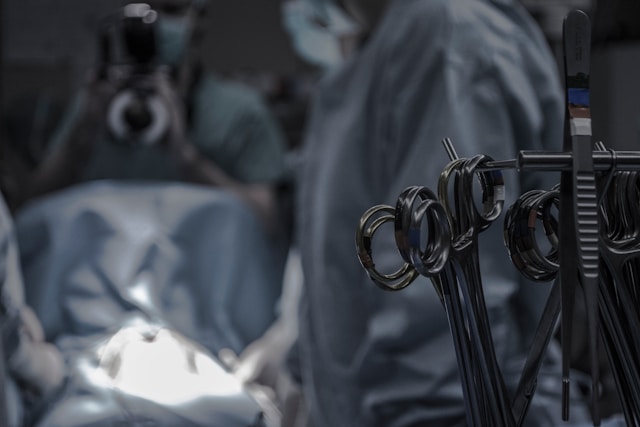- Change theme
The Complete Guide to Surgical Instrument Care and Cleaning

In any clinical setting, surgical instruments are among the most vital tools.
02:49 19 August 2025
In any clinical setting, surgical instruments are among the most vital tools. But their precision, performance, and lifespan rely heavily on one often-overlooked factor: proper care and cleaning. Whether you’re operating a large hospital or a private practice, maintaining your instruments isn’t just a hygiene protocol — it’s a core responsibility that directly impacts patient outcomes.
In this guide, we break down the essentials of surgical instrument care and cleaning — from daily handling tips to long-term maintenance strategies. And if you’re looking for a reliable surgical instrument supplier, aligning with a partner like SklarCorp ensures you start with the best tools possible.
Why Proper Care Matters
Poorly cleaned or mishandled instruments don’t just wear out faster — they become a liability. Dull edges, corrosion, biofilm buildup, or microfractures can compromise surgical success and even risk infections.
The goal of proper care is to:
- Maintain instrument performance
- Prevent cross-contamination and infection
- Extend lifespan and reduce replacement costs
- Ensure compliance with regulatory standards (like AAMI, CDC, and OSHA)
Step-by-Step Surgical Instrument Cleaning Process
Here’s a simplified framework to follow for optimal cleaning and care:
- Pre-Cleaning – Right After Use
- Immediately remove visible debris using distilled or sterile water (never saline).
- Do not allow blood, tissue, or fluids to dry on the surface.
- Use enzymatic spray if delays in cleaning are expected.
- Manual Cleaning
- Use neutral-pH enzymatic detergent that won’t corrode metal.
- Soft, nylon brushes should be used to scrub hinges, serrations, and joints.
- Open all box locks and hinges to clean thoroughly.
- Ultrasonic Cleaning (Preferred)
- Use for complex, hinged, or microsurgical instruments.
- Place instruments in open position and never stack them.
- Follow manufacturer’s instructions for frequency and cycle time.
- Rinsing & Drying
- Rinse with deionized or distilled water to prevent mineral stains.
- Dry completely using a lint-free cloth or medical-grade air blower.
- Inspection
- Check for cracks, rust spots, misalignments, dull blades, or loose joints.
- Use a magnifier or lighted inspection station for high-precision tools.
- Set aside damaged instruments for repair or replacement.
- Lubrication (Instrument Milk)
- Lubricate hinged instruments with water-soluble lubricants (instrument milk).
- Prevents rusting and ensures smooth movement during surgery.
- Sterilization
- Autoclave based on manufacturer’s specs — steam, EO gas, or low-temp plasma.
- Never overload trays; instruments should not touch during sterilization.
- Keep ratcheted instruments open during sterilization.
- Storage
- Store in a clean, dry, dust-free environment.
- Use trays, organizers, or sterilization wraps to avoid damage.
- Rotate stock — “first in, first out” policy prevents overuse of certain sets.
Common Mistakes to Avoid
Even small errors in daily handling can shorten the life of surgical instruments. Watch out for:
- Using tap water instead of deionized water
- Skipping the lubrication step after cleaning
- Keeping instruments closed during autoclaving
- Using metal brushes that scratch the instrument surface
- Overstacking trays, causing friction damage
Correcting these issues can improve both safety and cost-efficiency.
When Is It Time to Replace an Instrument?
Even the best care can’t stop wear-and-tear entirely. It’s important to identify when a tool is no longer safe to use.
Signs an instrument needs replacement:
- Corrosion, rust, or pitting
- Misaligned jaws or cutting edges
- Reduced tactile feedback or difficulty grasping
- Unusual resistance in movement
- Discoloration or staining that persists after cleaning
Most high-quality suppliers — including SklarCorp — offer repair and sharpening services that can extend the life of instruments before full replacement is needed.
Choosing the Right Surgical Instrument Supplier
It’s easier to maintain your tools when they’re high-quality to begin with. That’s where a trusted surgical instrument supplier like SklarCorp comes in.
With over 125 years in the industry, SklarCorp provides:
- Premium stainless steel instruments across 50+ specialties
- Clear care instructions with every product
- Lifetime warranties on many instruments
- U.S.-based support and sharpening services
By starting with quality and pairing it with proper care, your surgical instruments can perform reliably for years.
Final Thoughts
Caring for surgical instruments isn’t just about compliance — it’s about respecting the tools that make healing possible. From proper rinsing techniques to careful inspection and storage, every step matters.
And when your tools come from a reliable source like SklarCorp, you can be confident they’ll stand the test of time. The right supplier, combined with the right care, keeps your surgical team efficient, your patients safe, and your facility operating at its best.
